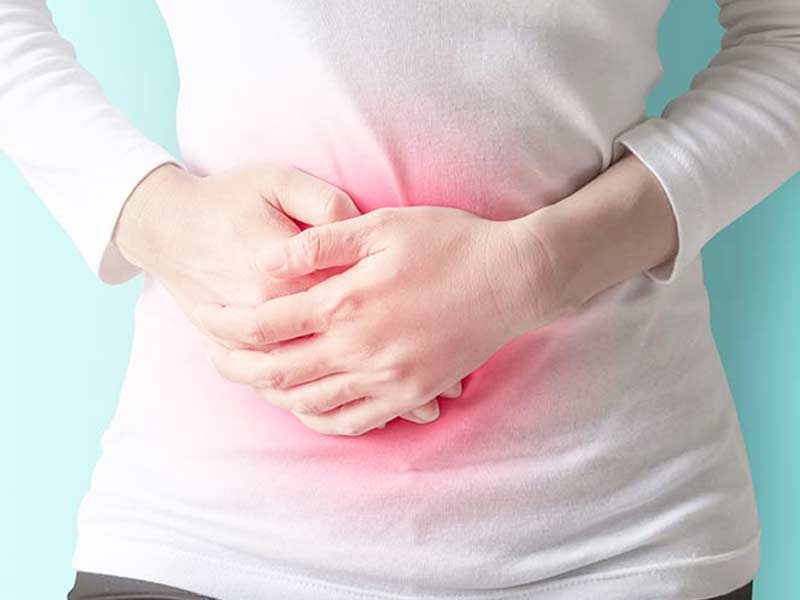
Dysmenorrhea or the period pain is a common symptom all of us women face quite regularly. The extent of the pain varies along with the symptoms accompanying it. Generally, the pain lasts between 24-72 hours and the extent of it varies too from person to person. Dysmenorrhea is a contraction of the uterus or tightening of it during menstruation that causes pressure in and around the blood vessels. These cramps are too uncomfortable at times yet can be treated with proper attention and a few precautions in our daily life.
Table of Content:-
Dr. Ekta Bajaj, Head and Senior Consultant, Obstetrics and Gynaecology, Ujala Cygnus Group of Hospitals give her expert views on how to handle dysmenorrhea.
How much do you know of Dysmenorrhea?
A medical term for the cramps and pains in the lower abdomen and surrounding organs generally experienced a few days before or during periods in women; simply stating, a painful period is called as dysmenorrhea. This condition is accompanied with some other symptoms too such as nausea, vomiting, back pain, thigh pain, and loose motions. Dr Bajaj describes two forms of dysmenorrhea:
- Primary Dysmenorrhea- This is only characterised by a few days of pain in and around abdomen, sometimes extending till legs and nausea or loose motions. This type of pain decreases with age and after child birth.
- Secondary Dysmenorrhea- This is typically recognized with the presence of a pelvic disease. These diseases may include Pelvic Inflammatory Diseases, Fibroids in uterus, endometriosis. This is also faced by Copper T users; users are generally of the age 30 and above. The pain may increase with time and requires diagnostic treatment.
Both Primary and Secondary Dysmenorrhea can be treated, and requires proper attention and diagnosis. Recognize the symptoms and talk to an expert doctor, the examination may include a study on your medical history and/ or a physical exam, if required.

Treatment for Dysmenorrhea- Medical and Home Remedies
Dr Ekta Bajaj points out the lifestyle that we lead and its possible effects on a woman’s body. And hence, the first advice is to take care of the nutrients that one intake.
- Low Fat diet is effective in reducing the pain experienced during periods. The preferred type of diet should be vegetarian is also helpful to avoid extra fats that are imparted by non-vegetarian food. Reduce if not avoid.
- A good exercise routine is important to maintain overall health. An efficient exercise releases happy hormones called endorphins that reduce the perception of pain in the body. This also concludes that you sure can work out during periods; just see if you can restrict yourself to heavy workout during those days.
- A diet that helps decrease the pain. A lot of studies show that vitamins such as vitamin B1 and B6 are helpful to tackle pain. Including fish oil is also a great remedy for period pain.
- A simple Home remedy includes Hot Compress. A hot compress is an absolute natural home remedy that one can adapt to reduce the pain. A heating pad applied to your abdomen and lower back helps relieve pain. Alternatively, a hot towel or a warm bath can also do the trick.
- Medical Treatment- Pain killers such as Paracetamol, Ibuprofen, and aspirin are often taken by women having extreme pain. But it is better to take an expert advice before resorting to pain killers.
- In case you have secondary dysmenorrhea, identification of the problem is important to start with specific treatment and medicines. Antibiotics, progesterone therapy are common during endometriosis; Removal of the previously using Intra uterine devices is helpful.
Also Read: Are You Getting Periods Twice In A Month? Here Are Some Possible Reasons Why
A pain that lasts more than 3 days and hampering your daily tasks has to be consulted. Exercising and a good diet is always good ways to keep your body fit even during not-so-good days.
With inputs from Dr Ekta Bajaj, Head and Senior Consultant, Obstetrics and Gynaecology, Ujala Cygnus Group of Hospitals
Read more articles on Women's Health
Also watch this video
Read Next
Heavy Menstrual Bleeding? Know The Causes, Symptoms And Treatment Of Menorrhagia From An Expert
How we keep this article up to date:
We work with experts and keep a close eye on the latest in health and wellness. Whenever there is a new research or helpful information, we update our articles with accurate and useful advice.
Current Version